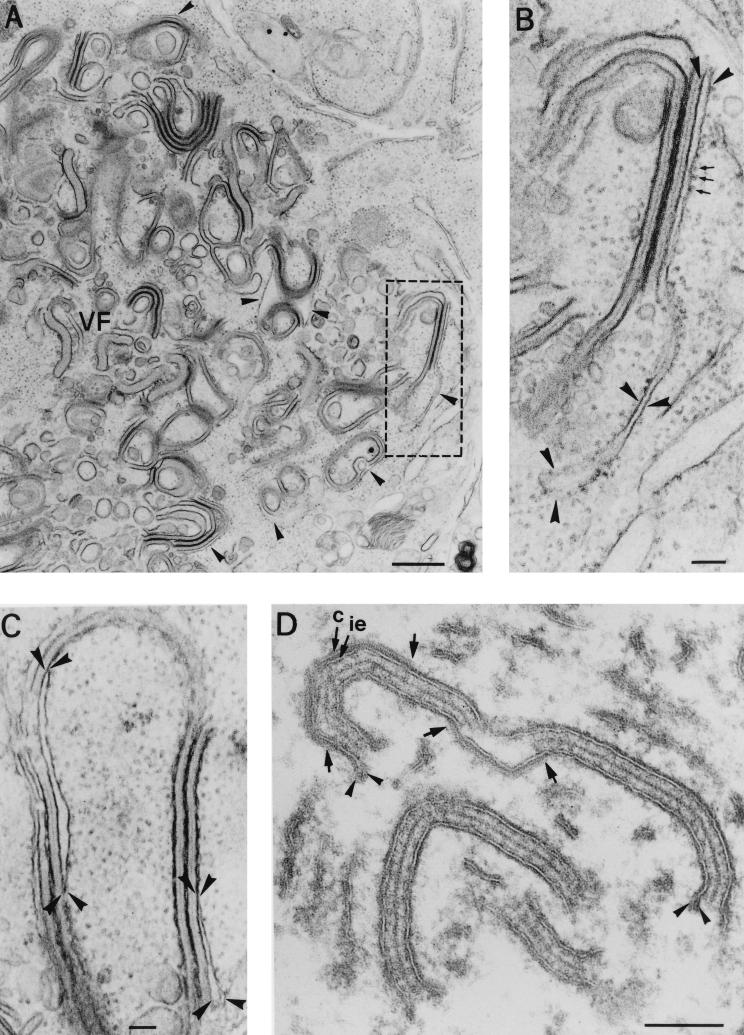FIG. 8.
Origin of the inner envelope of ASFV recombinant vA72. Epon sections of Vero cells infected with recombinant virus vA72 for 18 h in the absence of IPTG (A to C), or treated with the inducer at 18 h p.i. for an 8-h period (D) are shown. (A) Under nonpermissive conditions, the viral factories (VF) show a great accumulation of zipper-like structures and a virtual absence of polyhedral viral structures, as a consequence of the inhibition of capsid formation. In the peripheral areas of the assembly sites, the zipper-like structures appear clearly associated with ER cisternae (arrowheads). (B) Higher magnification of the region delimited in panel A. Note how a rough ER cisterna (arrowheads) appears directly bound to an extended viral core shell. The small arrows indicate ribosomes. (C) Partially collapsed ER cisternae associated with zipper-like structures. The arrowheads delimit local extensions where the cisternal structure is still evident. In our interpretation, the collapse would lead to formation of the viral envelopes by the tight apposition of the two limiting lipid bilayers. (D) Detail of a viral factory after an 8-h period of IPTG induction. Under these conditions, the zipper-like structures become polyhedral intermediates by the de novo and gradual assembly of the capsid layer (c) on the inner envelope (ie). The arrows indicate the ends of two capsids assembling on opposite faces of the same zipper-like structure. Note also the presence of membrane loops (arrowheads) at the ends of the viral envelopes. Bars: 500 nm (A) and 100 nm (B to D).

